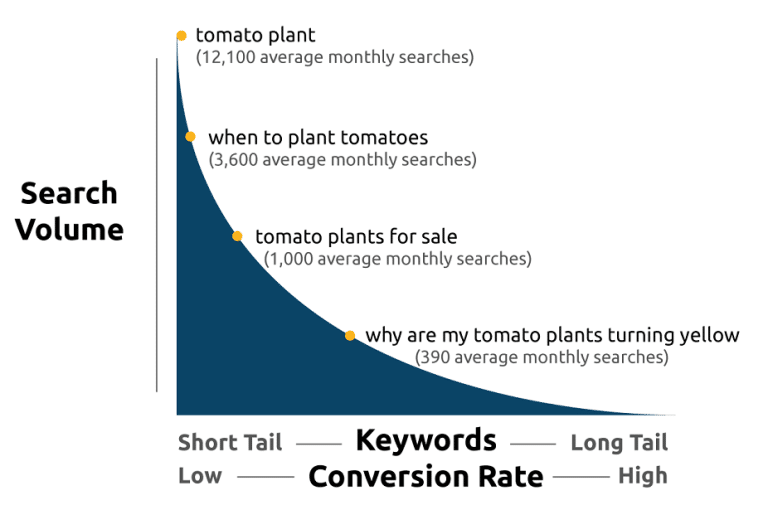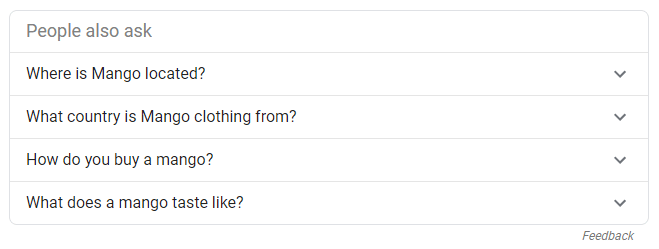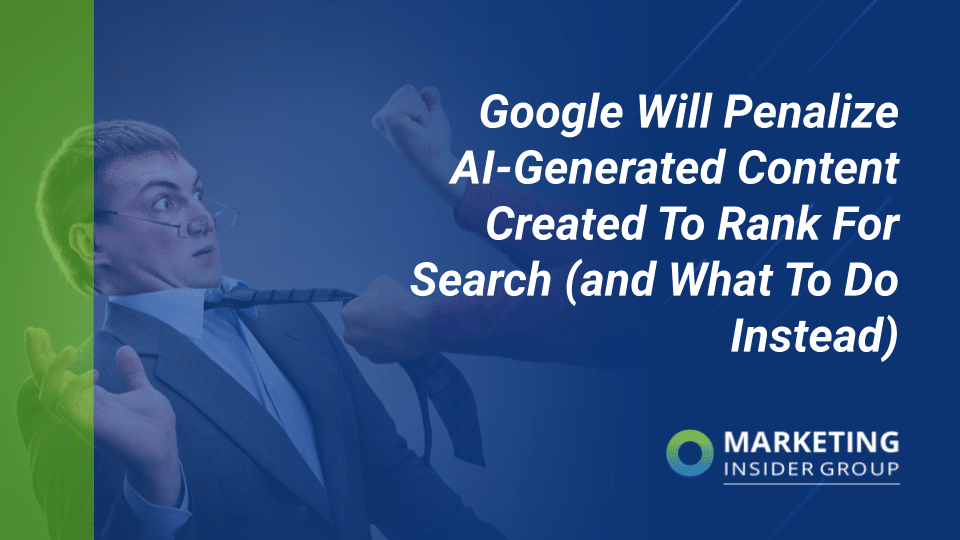
What’s the Question Behind the Question: Search Intent Optimization
In a previous article on understanding search intent, we explored search engine optimization and keywords. At the early stages of search engine optimization, the focus was on researching keywords that are the most competitive and drawing traffic to our sites.
Today, keywords are still important, but there are so many more factors that come into play. These page rank factors include creating a secure and accessible website, having a fast page speed (desktop and mobile), optimized content, and more.
As Google works to advance their service and provide even more accurate results to searchers, there is more of a focus on searcher intent.
What Do You Mean?
Searcher intent (or “user intent”) is the reason (or motive) that someone has for carrying out a query. Knowing this reason is critical to search engine optimization. As Google becomes savvier at determining searcher intent, it is our job as content marketers to make sure that our content fits its criteria so that we can rank (or continue to rank) high in search results. Google will be looking for results that not only fit the search term but also fit the search query’s intent.

But “intent” can be broken down more specifically than just a “reason.” There are different types of intent based on exactly what a customer needs.
The 3.5 Types of Intent
We say that there are 3.5 types rather cheekily because some sources claim there are three types of intent whereas others say there are four—but we can combine three and four into one type of intent. Here they are:
Informational Intent
“Oh, he looks like that one actor! He was in Die Hard with Bruce Willis. Argh, what’s his name? Hold on, let me Google the cast list of Die Hard.”
When we need information—a phone number to a restaurant—or we want to figure out who was that one guy in that movie about the end of the world, we almost readily turn to the search engine.
A lot of searches submitted each day revolve around this type of informational intent because people want to know something. Queries can include all the 5W1H (or Five Ws and How): Who, what, where, why, when, and how.
- Who won the presidential race for France?
- What is the weather like in San Francisco during the winter?
- Where are guinea pigs native?
- Why does it snow?
- How to bake the perfect chocolate chip cookie
Navigational Intent
This type of intent occurs when a user submits a query because they want to get to a particular website on the Internet. Sometimes website names are easy: Facebook.com, Amazon.com, concurred.com, ebay.com. Other times they are a few words long, difficult to remember, or difficult to spell—or we do not know them. And sometimes we are not sure if the website name ends in a .com, .net, .org, .edu, or some other new variation.
Queries based on navigational intent can look like “eBay” or “Toyota dealer in Tucson, Arizona”.
Transactional and Commercial Intent
Here is our third and fourth, or three and three point five, types of intent. Some sources lump commercial under transactional, but others, like Yoast, separate commercial into its own category (They actually call it “commercial investigation.”).
The reason that these two get lumped together is because they are fairly similar. In our other blog post, we briefly referenced this combination.
Here’s how Yoast differentiates the two:
Transactional intent occurs when someone is getting ready to buy something right now and are searching for the best product or purchase.
Commercial investigation occurs when someone is going to buy something soon (think less than six months), and they doing research to find the best product and gather more information.
The key difference between the two is “now” and “later.” But the difference is slight, and since it’s not significant enough of a difference, it’s not worth separating the two. In the end, people are going to buy things, either now or a month from now, and they will both be conducting similar research.
Search Intent Optimization
Now we come to the “fun” part. You get to conduct your own informational intent-based query to find the right combination of keywords to help your website rank.
The Potential for Ambiguity
Let’s first talk about keyword ambiguity. If someone were to search “apple,” what exactly do they mean? The first issue is that they can be searching for the fruit apple. Or they could be searching for Apple, the technology company. But if you were to search “apple” on Google, all the results that are returned deal with the technology company—everything from the main Apple.com website and the latest blog posts from the website to videos and different Apple store locations nearby. We don’t get a result about the fruit until page five of the results, and even then it is the eighth result down. We have to search “apple fruit” to get what we want.
“Apple” is more of a difficult search term because Apple, the tech company, has dominated the space. What if we were to type in something else, like “cars”? The intent isn’t clear, because we could be looking for nearly anything related to cars:
- The history of cars
- Cars for sale
- Car repair shop
- Types of cars
- The Pixar animated franchise, Cars
The list goes on.
For “cars,” Google’s results include top stories involving cars (other local and national), cars.com, some local results for car dealers and car accessories stores, and websites selling used cars. Google is great, but not (yet) a mind reader, so we need to be more specific: “history of cars” returns more relevant results.
But Google is getting there, especially with its “People also ask” section. Here’s what you get for “mango”:

Connecting the Dots
Knowing the three (and a half) types of search intent is the foundation you need to find the right keywords to target. Understanding why searchers conduct the queries they do will help you be more strategic when creating your keyword list. Instead of just looking at a keyword’s volume and competitiveness, you’ll also want to look at it in terms of intent and financial value.
In “How to understand searcher intent and use it to boost SEO rankings”, Marcus Miller breaks down how to “map” search intent into keywords using the above mentioned values.
- Keyword: What keywords are you interested in targeting? If you do not currently have a keyword list, you can start by creating a list of phrases and long-tail keywords that you think might work. As you begin to fill out the rest of the values, you can start to strategize and tailor the list to your website.
- Volume: Volume refers to how often users search the keyword per month. Everyone wants to try and optimize for a keyword with a high search volume, but that doesn’t mean it is the best (or smartest) decision for you. Whether or not optimizing for a high-volume keyword will also depend on its financial value and competitiveness.
- Competitiveness: How many other webpages will you be competing against to try and rank for this particular keyword? Again, weigh keyword competitiveness against volume and financial value.
- Financial Value: If you rank for this keyword, what is the return on investment you can expect from it? That is, is the potential value low, medium, or high?
- Intent: What search intent type does this keyword satisfy? Is it navigational, informational, or transactional?
Once you have all this information, you’ll be better able to weigh one keyword against another. If a keyword has a low search volume but a high financial return and moderate competitiveness, there may be some value in trying to rank for it. It all depends on your strategy and the resources that you have available to you.

Did You Mean…?
The thing about intent is that it is never 100% straightforward. Even in our everyday conversations and actions, our intent can be misinterpreted. What you think a keyword’s intent is may not be how Google views the intent. Therefore, a good intent test is to type in the keyword for which you want to rank and see what types of results Google returns. If you anticipated that you would receive informational results, is that what you received? If not, you’ll have to consider if you still want to rank for that keyword, and if you do, you’ll have to adjust your content to match the intent.
Searcher Intent Optimization Roundup
To rank well in Google, we need to make sure that we’re providing the best content that answers a searcher’s query. We can do so by:
- Understanding the types of search intent
- Knowing how to identify and choose keywords based on their volume, competitiveness and financial value, as well as knowing what intent they answer
- Identifying the types of content Google ranks for each type of intent and emulating such content on our own webpages
In the effort to provide the best, most accurate results to the user, Google seeks ways to become more sophisticated and really understand the user through intent and previous history. And as Google goes, so do we.






